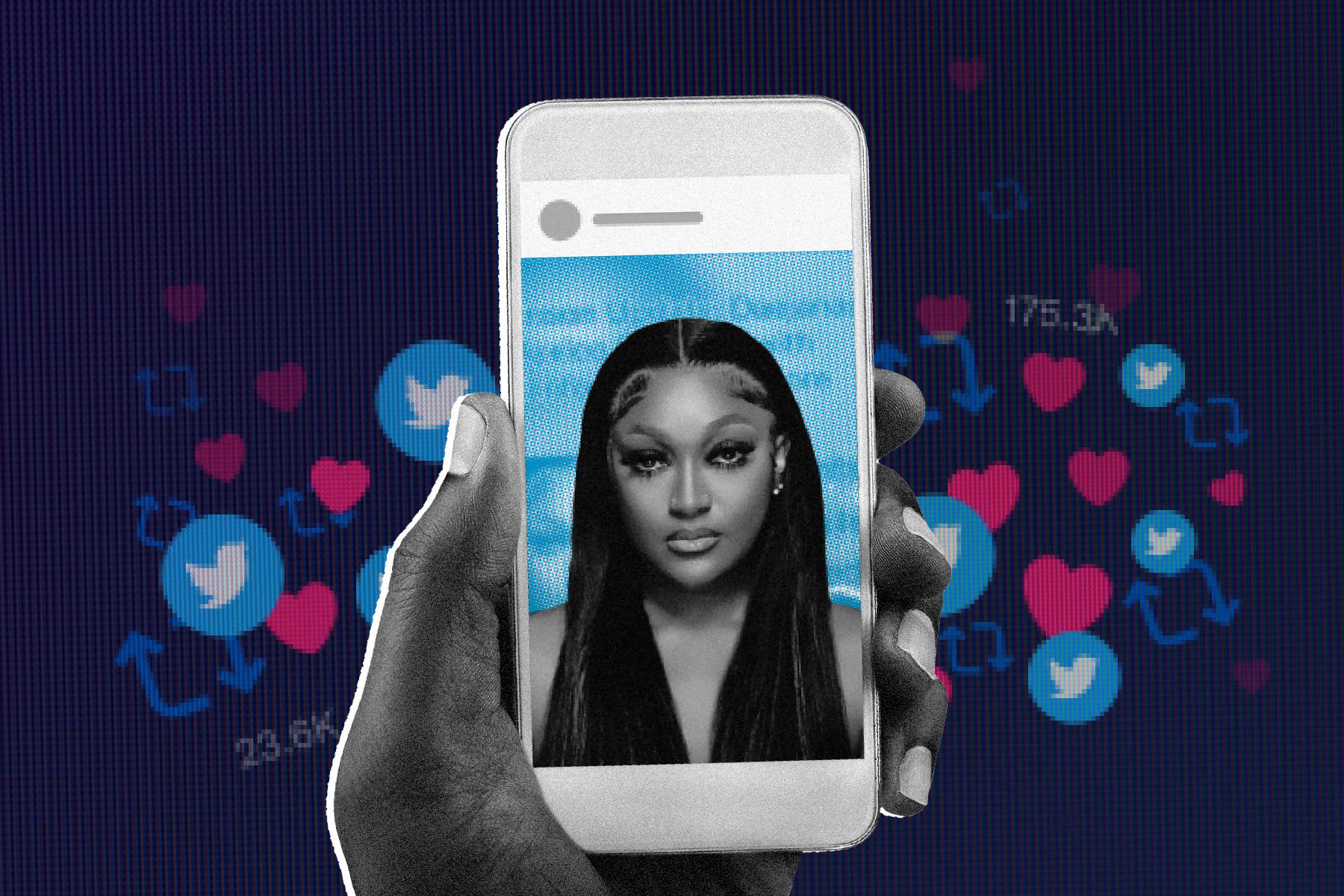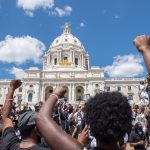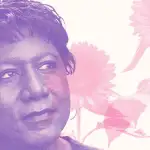Shanquella Robinson’s death could have easily fallen through the cracks. In the first two weeks after the 25-year-old from North Carolina was pronounced dead during a group vacation to Cabo San Lucas, Mexico, her story was limited to a few local news reports. It appeared that her death would be treated like those of many other Black women and girls – with cursory, if any, attention from the news media. But then, video of a woman being beaten emerged, and the news of her death went viral.
One tweet by North Carolina blogger Mina Lo with the words, “Rest in Power Shanquella Robinson” has garnered more than 50,000 likes and nearly 17,000 retweets. National news organizations, including CNN and the New York Times, have since picked up Robinson’s story, highlighting the power and potential of Black media platforms. From the killing of Lauren Smith-Fields last year to Robinson last month, Black people online have been a driving force behind elevating stories about missing and murdered Black women and girls in the absence of mainstream media.
Black women and girls face high rates of intimate partner violence, sexual assault and homicide. However, their cases are rarely treated with urgency. Robinson’s case stands out for the level of attention it received due to not only her family’s advocacy, but also the Black-owned blogs and social media accounts that recirculated the video and emerging details, pushing it into the view of a wider audience.
“We’ve relied on the connections that we have in Black communities to spread the word of issues that are of importance to us for centuries,” said Dr. Meredith Clark, an associate professor of journalism and communication studies at Northeastern University who researches Black Twitter and Black resistance online. “It reaffirms something that we say a lot – ‘We all we got’ – and this, to me, is an example of what that looks like in a news media context.”
From Ida B. Wells’ investigations of lynchings in the South to the Black press’ role in unearthing the truth about the killing of Emmett Till, Black media outlets have historically been vital sources of information about violence against Black people, particularly when mainstream media have disregarded their stories through systemic bias and racism.
“That’s where we could go and send out our messages,” said Nicole Carr, a journalist at ProPublica and professor at Morehouse College who teaches a social justice journalism course.
More recently, especially over the past decade, social media has become a popular tool for gathering and sharing information related to social and racial justice. It is where the hashtag #BlackLivesMatter was born in 2013 and where activists, scholars and others have strategically used hashtags and other messages to quickly disseminate information to the general public.
“In matters of social justice, particularly when they relate to our community, we provide through those platforms the leads that are necessary to make mainstream outlets pay attention,” Carr said. She added that for journalists, in particular, social media can provide a jumping-off point for their coverage. Journalists might see a claim on social media and decide to follow up with a public records request to see if there is any validity to it.
“I’m not comparing Twitter users to the Black press as a whole. I’m just saying we have always found spaces to amplify important messages and get the word out, even when we’re unable to do that in so-called mainstream spaces,” Carr said.
Specific elements of Robinson’s case also stood out, adding to public shock and awareness.
The video and the contradictory accounts of her death drew wider attention to her case. The publicized details have also left many social media users wondering how someone could travel with people who appeared to be her friends and die violently less than 24 hours later.
The people who traveled with Robinson returned to the United States and told her parents that she died of alcohol poisoning. However, their stories were inconsistent with the information on her death certificate published online on November 16. The autopsy report lists Robinson’s cause of death as a severed spinal cord and trauma to the neck. It made no mention of alcohol poisoning.
That same day, Twitter users quickly began circulating a video showing a naked woman being viciously attacked by another woman. In multiple media reports, Robinson’s mother has confirmed the naked woman is her daughter. In the background of the video, a man can be heard saying, “Quella, can you at least fight back?”
After the video was released, Mexican authorities announced that they were investigating Robinson’s death as a femicide – the gender-based murder of a woman. On November 18, the FBI confirmed its involvement in the case.
An arrest warrant has been issued in Mexico for one person in relation to Robinson’s death.
“Black Twitter was responsible for amplifying the clear evidence of foul play,” Carr said.
Media and criminal legal researchers told The 19th that Robinson’s story might have gone unnoticed in a sea of other developing news around the country without circulation of the video.
“People tend to enter stories through the predominant visual. Usually it’s a photograph but videos as well. So that video of her being attacked caught a lot of attention as a very, very clear indication that something was wrong,” said Dr. Danielle Slakoff, an assistant professor of criminal justice at Sacramento State University who studies media portrayals of women crime victims.
Through the years, video has been “one of the critical tools to helping people understand a crisis as it unfolds,” in cases where Black people experience harm, Clark said, citing the nearly nine-minute video of George Floyd’s killing in May 2020 as one example.
In addition to the video, there is a relatability factor, she said. Many people have experienced going on a group vacation or a girls’ trip. The violence leading to Robinson’s death is a shocking turn of events.
Robinson’s mother told NBC News that she credits Black social media with the attention her daughter’s case has received. Such widespread coverage is rare for women of color, particularly Black women and girls, who are often overlooked, research shows.
Slakoff and her research team analyzed news coverage of White and Black missing women and girls in 11 U.S. newspapers over a four-year period. Missing Black girls and women accounted for about 20 percent of the stories they looked at, though they represent an estimated 34 percent of missing people, Slakoff said.
In a separate study, Slakoff also found a difference in the media portrayals of White and Black women crime victims. White women are depicted as more sympathetic while Black women are portrayed as complicit in the violence against them by highlighting details like their intoxication level or clothing at the time.
Both the number of news stories and the way those stories are told can make a difference for these criminal cases, Slakoff said. “There is a very long history of White women and girls being viewed as the ideal victim,” she said. “They are viewed to be in need of protection. So in essence, they are seen as worthy of our attention, but they’re also worthy of our resources.”
The disproportionate attention White women receive from the news media, public and police has come to be referred to as “Missing White Woman Syndrome.” Over the last year, the national fixation on the disappearance of 22-year-old Gabby Petito, a White woman, in addition to the HBO documentary “Black and Missing” have reignited conversations about these inequities.
In light of the skewed interest from news media and law enforcement, Black Twitter has been critical in raising awareness and questions around Black women’s deaths beyond Robinson’s case.
Following the 2020 police shooting of Breonna Taylor, a 26-year-old EMT, initial reports labeled her a potential suspect, while many news outlets did not report on her death at all. Hannah Drake, a Louisville-based writer and activist, helped call attention to Taylor’s death on social media, which shifted the media narrative about the circumstances of Taylor’s death.
In May of that year, The 19th’s editor-at-large, Errin Haines, reported on Taylor’s death, prompting other mainstream news outlets to follow, making it a national story. After repeated demands for accountability, the officers involved in Taylor’s death were ultimately charged.
In another case, Black social media users on TikTok amplified the story of Lauren Smith-Fields, a 23-year-old Black woman who was found dead in December 2021 after spending the night with an older White man she had met on the dating app Bumble.
Fields’ autopsy results indicated her cause of death was a result of fentanyl, promethazine, hydroxyzine and alcohol, but her friends and family said she was not a drug user and called for the police to do more. Following criticism from Black TikTok users about disparate treatment between White and Black victims, more mainstream news outlets began to cover her death. Her case remains open.
Despite more national conversations about bias against Black women victims, researchers told The 19th they believe Black social media will continue to bear the responsibility of sharing these stories.
All of this is also happening at a time when digital communities made up of historically marginalized groups, such as Black Twitter, face questions about their future following billionaire Elon Musk’s chaotic acquisition of the platform.
Questions about Twitter’s future are tied to how Black people will advocate for missing and murdered Black women and girls moving forward, Clark said. “It’s integral to thinking about how marginalized communities share information and get traction around stories that otherwise would not get attention.”






